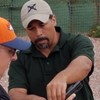
What is awareness and why is it so important? The self-defense community tends to focus on the hard skills of using physical force as the answer to all problems, with very little focus on avoidance other than paying lip service to the idea. By being aware, we may be able to see a potentially life-threatening situation starting to develop. We can then react to the situation faster, deescalate the situation all together, or avoid it by leaving the area. In order to do this, you will need to develop a high level of Situational, Environmental, and Spatial awareness.
Types of Awareness
The Merriam-Webster definition of awareness is “the quality or state of being aware: knowledge and understanding that something is happening or exists.” We can break awareness down into three equally important categories: Situational, Environmental, and Spatial awareness.
It is important to understand that the human mind can only be in five mental states. These same five states are equal to Jeff Cooper’s color codes of conditions, which you might already be more familiar with:
- Unaware = Condition White
- Aware = Condition Yellow
- Alerted = Condition Orange
- Alarmed= Condition Red
- Panicked = Condition Black
Two states we never want to be in are unaware and panicked. Ideally, we try to live in the general awareness state, specifically focusing on Situational, Environmental, and Spatial awareness.
Situational Awareness
Situational Awareness is being aware of who is in your vicinity and what they are doing.
An example would be paying attention to everyone who is entering and leaving a restaurant you are at. You are aware of their dress, mannerisms or body language, who they are accompanied by, what they have in their hands, and maybe even what their conversations are about. You might also be aware of what food they are ordering and what they’re paying attention to and why.
Environmental Awareness
Environmental awareness is paying attention to not only your avenues of ingress, egress, cover, and concealment, but atmospherics as well. What is the vibe of your environment? Does it feel festive and friendly or can you sense tension and negativity?
Environmental awareness also includes being aware of weather conditions and any hazards such as a slippery floor or uneven terrain you may be standing on. What if you needed to defend yourself, yet you were standing in snow with patches of ice? This environment could affect your response. Or what if you are wearing slick dress shoes on a well buffed and waxed floor? These are very important details we don’t tend to take into consideration when we think of self-defense.
Spatial Awareness
Spatial awareness is all about proximity: the farther away I am from danger, the more time I have to process what is happening and formulate a more informed response. Ask yourself the following questions. How far am I from the exit, entrance, or hard cover? How close were those sounds of gunshots and screaming? More importantly, do I have to safely use cover and concealment to exit the area or am I so close to the incident that I am forced to defend myself in order to have any chance of survival?
self-defense awareness: Putting it All Together
So, what could it look like if we put it all together? Let’s go back to that fictional restaurant where we are eating lunch. Because we had good Situational Awareness, we noticed a man adjusting his waistline outside the restaurant window before coming in the main entrance and walking up to the counter—which is out of your view. You hear the man curse at the cashier in a loud tone. Then, you hear gunshots.
Because you were already aware of the suspicious behavior, you already identified how close your cover and concealment was (Spatial Awareness) and move undetected to a brick wall that leads to the location of your closest and safest exit, which is a side emergency exit door (Environmental Awareness). You are able to remove yourself to safety and call 911. You can also be a good witness for the arriving law enforcement.
Next time you are out and about, try to pay more attention to who is around you, what they are doing, and how close they are to you by practicing good Situational, Environmental, and Spatial Awareness. Stay alert and stay alive.
For additional self-defense tips, read more on the ShootingClasses.com blog. You can also find firearms training classes near you that specialize in self-defense.
